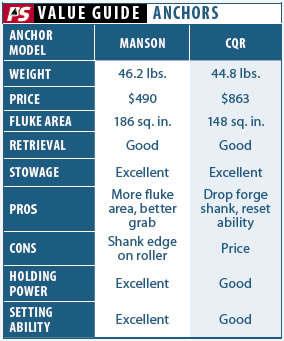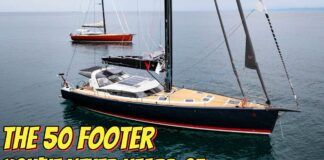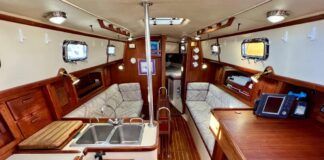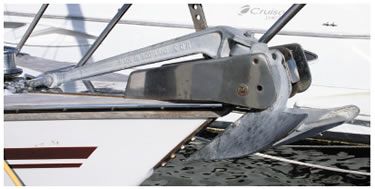
During the initial swap, I couldnt help but notice how much more fluke area the Manson provided compared to the CQR. And the claw-like geometry seemed to more efficiently grab the bottom when compared with the CQRs plow shape. These assumptions were supported during initial anchoring efforts. The Manson grabbed hold of the bottom with very little scope deployed; breakout took a more concerted effort; and the amount of sand, and mud and other detritus retrieved from familiar anchorages was much greater than what the CQR hauled to the surface. The value of a pressure wash-down pump rose considerably.
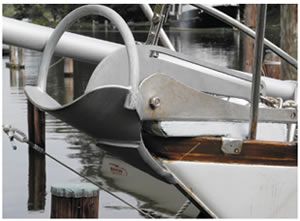
The Manson Supreme is also quite willing to rotate into a fluke-down, ready for the roller, alignment. I prefer to avoid the use of an anchor swivel simply because of its weak-link nature. Fortunately, the Manson is willing to spin out any hockles in the chain, as it makes its way to the surface. It reaches the roller aligned for retrieval, but I preferred the CQRs contact surface with the roller. It offered a rounded, drop-forged shank that was less prone to chewing up the rubber roller. Time will tell whether roller wear will become an issue. The rubber roller does dampen chain noise, but switching to a bronze roller would solve the narrow, hard-edge chafe issues, and the use of a snubber line does keep the anchor loads off the chain running over the roller and noise to a minimum.
So far, Ive anchored in sand, mud, rocky bottoms, and weeds. I try to avoid the latter due to environmental concerns, but occasionally, there are no other options. The Manson Supreme is indeed a versatile anchor, and as might be expected, mud and sand are bottom conditions that deliver superb holding power. The structure of the fluke and the taper to the well-reinforced point make it just as useful when it comes to snagging the edge of ledge or rock out-cropping. The geometry of the fluke and shank, and the metallurgy make it quite immune to point loading. The quality and surface area of the weld attaching the shank to the fluke eliminates concern over a structural failure at this essential joint, and my only lingering concern is how to extract a seriously snagged anchor caught in a rocky outcrop.
Manson has addressed this concern with a long slot running down the shank that allows users to slide a lightly tensioned shackle toward the fluke and back out a fouled anchor. They also provide a means to permanently shackle the rode to the end of the shank, nullifying this back out ability. Ive opted for the latter approach and use a small float and some buoyant polyethylene line tied to the roll bar as my means of freeing a stuck anchor. It also marks where my anchor has been dropped-a useful signal to late arrivals in a crowded anchorage.
So far, Ive ridden out a few squally encounters with gusts approaching 50 knots and minimal seas due to well-protected coves and weather spawned by short thunderstorm downbursts. The holding ground has been good, and with 3:1 scope (10-millimeter chain), the anchor did not budge. In similar conditions, I would have been adding more scope to the CQR in order to count on similar results. This greater grab with shorter scope affords anchoring options that make limited swinging room more viable. Ive yet to face a prolonged blow in a mediocre anchorage, but I expect the routine aboard Wind Shadow will likely remain the same, an additive approach that leads to doubling up on ground tackle, relying on two anchors deployed from the bow.
During further long-term testing, Ill also be looking at how the galvanizing holds up; well put the sliding shackle to the test, and hopefully will become as familiar with the Manson Supreme as we are with the venerable CQR. Initial findings indicate that the swap has been a step in the right direction.
